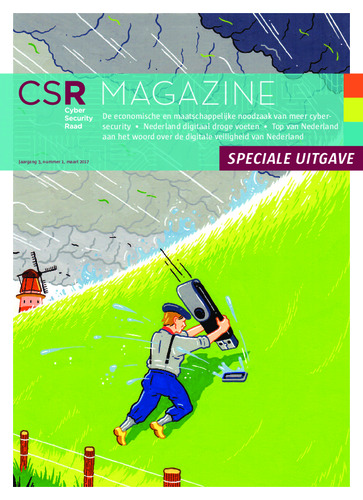- Home >
- Services >
- Access to Knowledge >
- Trend Monitor >
- Source of threat >
- Trend snippet: Digital and physical processes in society have become intertwined and crisismanagement should be able to deal with this
Trends in Security Information
The HSD Trendmonitor is designed to provide access to relevant content on various subjects in the safety and security domain, to identify relevant developments and to connect knowledge and organisations. The safety and security domain encompasses a vast number of subjects. Four relevant taxonomies (type of threat or opportunity, victim, source of threat and domain of application) have been constructed in order to visualize all of these subjects. The taxonomies and related category descriptions have been carefully composed according to other taxonomies, European and international standards and our own expertise.
In order to identify safety and security related trends, relevant reports and HSD news articles are continuously scanned, analysed and classified by hand according to the four taxonomies. This results in a wide array of observations, which we call ‘Trend Snippets’. Multiple Trend Snippets combined can provide insights into safety and security trends. The size of the circles shows the relative weight of the topic, the filters can be used to further select the most relevant content for you. If you have an addition, question or remark, drop us a line at info@securitydelta.nl.
visible on larger screens only
Please expand your browser window.
Or enjoy this interactive application on your desktop or laptop.
Digital and physical processes in society have become intertwined and crisismanagement should be able to deal with this
One of the hits after Googling ‘preparing for disaster' (in Dutch) is a link to a Dutch government webpage titled ‘What to do in the event of a disaster?' (in Dutch). A few further clicks will yield extensive information on how to prepare, specifically, for a cyber attack. What is striking, says Prins, is that most of the measures listed there focus on preventing a cyber emergency. 'Only very few of those measures concern the period during and after the emergency. It also strikes me that the measures that do cover that period only concern a digital disaster and highlight the importance of changing passwords and installing new anti-virus software.' That approach is too restricted, says Prins. 'Digital and physical processes in society have become intertwined very rapidly. As a result, it's quite conceivable that a future cyber emergency will not remain limited to the digital domain, but spill over into other areas such as healthcare, transport and all sorts of infrastructures and processes - including vital ones. The examples are all too familiar: in the WannaCry ransomware attack, part of the British healthcare system crashed. NotPetya brought the production of vital medicines to a standstill and caused hundreds of millions of euros worth of damage to one of the world's biggest container shipping companies.' Internal interaction Fortunately, crisis and disaster management organisations are devoting more and more attention to the intensive interaction between the digital and physical spheres. Prins: 'Take, for example, the Dutch National Security Strategy 2019. Likewise, the Cyber Security Assessment Netherlands 2019 explicitly refers to the threat of societal disruption as a consequence of digital attacks. 'Both documents send a stark message: the risks in our digital society are changing and we will need to take new measures that will allow us to act effectively and limit the damage in the event of a disruptive attack.




